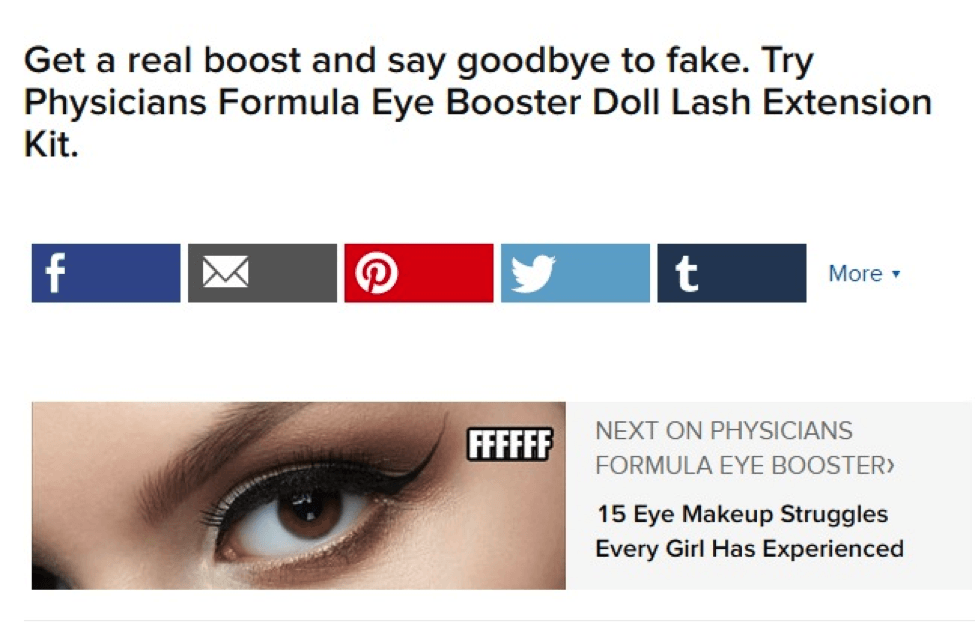3 Steps for Creating a Native Ad Strategy for Your Business
Advertising has gotten pretty clever and not so “in your face,” which consumers appreciate, and a big part of this movement is the use of what are called native ads. Native ads are becoming very popular for their formats, content and placement because they blend in with the theme of the page where they are advertising. Many web surfers may not even realize they are clicking into or reading an advertisement. In other words, although there may not be a formal definition for native advertising, it’s usually quality content that rolls with the website layout rather than popping or flashing in your face.
The content is generally well written and insights interest to the consumer from the similar subjects they are searching. Examples are sponsored content, promoted tweets or posts, interactive videos, or graphics. Native ads can be found mostly online, however, print advertorials do work as well.
Examples and How Native Ads Can Help Your Business
-
Honesty
Be open and honest with your consumers. Mark content that is sponsored or promoted, meaning it’s not overly emphasized on the content to make it look like an ad, and this way the consumer can see that the content isn’t natural to the site. The great thing about native ads is once you find the right venue; your consumers may treat native ads like regular content. Hence why well-written content is important.
Buzzfeed is one of the best websites out there using promoted content/ native ads. As you can see in the screenshot below, Physicians Formula Eye Booster is advertising their product, but instead of talking about their product they are incorporating it into an article that goes along with the theme of Buzzfeed.
-
Write for your audience.
Yes, this is an ad and yes, you do want to gain your target goal whether that be purchases, views, pledges, etc. However, it’s important to write for your audience and not the marketer. Native ads are meant to have meaningful content for their consumers. You also need to make sure you follow through on what your headline promises in order to keep your reputation in check (which can be a big risk if native advertising is done wrong), which you can learn more about form our online reputation management services. See above, “11 Struggles That People Who Haven’t Tried Fake Eyelashes Will Never Understand,” it’s written like a listicle Buzzfeed article. People who visit Buzzfeed.com expect articles of this nature. The content is also perfect for this audience – a majority are women, and women know makeup struggles.
At the end of the article, you will find the call to action, as shown below:
“Get a real boost and say goodbye to fake. Try Physicians Formula Eye Booster Doll Lash Extension Kit.” It’s a simple two-sentence plug, and it works. It’s not in your face. It’s not yelling from your TV to buy this new product. The article entertained you and then made a suggestion to try their product. The call to action is followed by a similar promoted article from the same brand. Link your content inside your content! If someone clicks on an article about fake eyelashes, they’re sure to be interested in eye makeup articles. In the second article, they link to the Eyelash Booster Kit mentioned in the first article. It’s all tied together as a package.
-
Keep it short and on point.
Don’t try too hard. Your readers can tell if it’s forced. This is fairly easy to do for listicles and graphics, but it’s important to keep this in mind no matter what type of native advertising you’re doing. Keep it simple. You don’t want to lose your audience in a jumbled mess of trying to be entertaining and selling your product at the same time. That’s almost worse than pop-up ads (almost).
Why Does This Type of Advertising Work?
According to Shareaholic, 70 percent of people want to learn about products through useful content rather than traditional advertising, and people click and view native ads a whopping 53 percent more than banner ads. The content is also easily shareable. If people are passionate about a product, they want their friends to know about it. In the social media world, that means sharing to your newsfeed, and native ads are an easy way to do that. Sharing a native ad doesn’t feel like you’re promoting a product – you’re promoting information surrounding a product.
A native ad campaign can be a great way to boost already-known products or introduce new products to your goal markets. The important thing to do is always clearly define your content as an ad for your consumers. No one likes to be tricked, and your ad may be taken down by the ISBA or IAB. Brainstorm ideas for your audience and stick to the message. Your native ad campaign can create exciting new avenues for catching your target audience’s attention.
Have you tried native advertising before, either allowing it on your website or advertising on another website? Let us know how it works for you and what results you saw in the comment section below.










